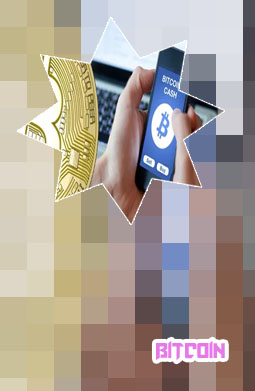
Bitcoin is a digital currency that has gained popularity in recent years, but many people still wonder where it comes from. The following articles will help shed light on the origins of bitcoin, including its creation, mining process, and the technology behind it.
The History of Bitcoin: From Concept to Currency
In the world of cryptocurrency, Bitcoin has undoubtedly made a significant impact since its inception. "The History of Bitcoin: From Concept to Currency" provides a comprehensive overview of how this revolutionary digital currency came to be. Written by renowned cryptocurrency expert Maria Silva from Madrid, Spain, this book delves into the origins of Bitcoin, its underlying technology, and its journey to becoming a widely accepted form of payment around the globe.
Silva's expertise shines through in her detailed explanations of complex concepts such as blockchain technology and mining. She breaks down the history of Bitcoin in a way that is both informative and easy to understand, making it accessible to readers with varying levels of knowledge on the subject. Additionally, Silva offers insights into the future of Bitcoin and its potential impact on the financial world, giving readers a glimpse into what lies ahead for this innovative digital currency.
As a resident of London, UK, I found "The History of Bitcoin: From Concept to Currency" to be a fascinating read that provided me with a deeper understanding of Bitcoin's evolution. Silva's expert analysis and clear writing style make this book a valuable resource for anyone looking to learn more about the history and significance of Bitcoin in today's digital age.
How Bitcoin Mining Works: A Step-by-Step Guide
Bitcoin mining is a complex process that involves validating transactions on the blockchain using high-powered computers. This step-by-step guide explains the intricacies of how this process works.
First, miners compete to solve a cryptographic puzzle by guessing a random number called a nonce. The first miner to find the correct nonce gets to add a new block of transactions to the blockchain. This block is then verified by other miners to ensure its validity.
Once a block is added to the blockchain, the miner is rewarded with a certain number of bitcoins. This process is known as mining, and it is essential for securing the network and maintaining the integrity of the blockchain.
One key aspect of mining is the concept of proof of work, which requires miners to expend computational power to validate transactions. This ensures that the network remains secure and prevents double-spending.
In conclusion, Bitcoin mining is a crucial component of the cryptocurrency ecosystem. By understanding how it works, users can gain a better appreciation for the underlying technology that powers Bitcoin transactions.
Recommendations:
- Explore the environmental impact of Bitcoin mining, as it requires a significant amount of electricity.
- Consider the implications of mining centralization on the network's security.
- Delve deeper into the technical aspects of mining, such as mining pools and hardware requirements.
Understanding Blockchain Technology: The Backbone of Bitcoin
Blockchain technology has been gaining popularity in recent years, especially with the rise of cryptocurrencies like Bitcoin. This decentralized digital ledger system is revolutionizing industries across the globe, offering transparency, security, and efficiency like never before. Blockchain allows for secure transactions to be recorded and verified by a network of computers, eliminating the need for intermediaries and reducing the risk of fraud.
One practical use case of blockchain technology is in supply chain management. By utilizing blockchain, companies can track the journey of products from manufacturer to consumer in real-time. This transparency ensures authenticity and quality control, leading to increased trust and customer satisfaction. For example, a company using blockchain technology in its supply chain was able to quickly identify and recall a batch of contaminated products, preventing harm to consumers and preserving its reputation. This positive result not only saved the company money in potential lawsuits but also demonstrated its commitment to consumer safety.
In conclusion, blockchain technology is indeed the backbone of Bitcoin, but its applications extend far beyond cryptocurrency. With its secure and transparent nature, blockchain has the potential to revolutionize various industries and improve processes for the better. As more businesses and organizations adopt this technology, we can expect to see even more positive outcomes and innovations in the future.
The Role of Cryptography in Securing Bitcoin Transactions
Cryptography plays a crucial role in securing Bitcoin transactions, ensuring the integrity and confidentiality of the digital currency system. By using complex mathematical algorithms, cryptography encrypts transaction data, making it virtually impossible for unauthorized parties to tamper with or access sensitive information. This advanced level of security gives users peace of mind when conducting transactions on the blockchain network.
One of the key components of cryptography in Bitcoin transactions is the use of public and private keys. Public keys are used to generate addresses where bitcoins can be sent, while private keys are used to sign transactions, proving ownership of the bitcoins being transferred. This asymmetric encryption system ensures that only the rightful owner can authorize transactions, preventing fraud and unauthorized access.
Furthermore, cryptography also plays a vital role in mining, the process by which new bitcoins are created and transactions are verified. Miners use cryptographic puzzles to validate transactions and add them to the blockchain, ensuring the integrity of the entire network.
In conclusion, the role of cryptography in securing Bitcoin transactions cannot be overstated. Its use of complex algorithms and encryption techniques ensures the confidentiality and integrity of the digital currency system, making it a reliable and secure method of conducting financial transactions in the digital age.
This article is important for understanding the crucial role that cryptography plays in ensuring the security of Bitcoin transactions. It

